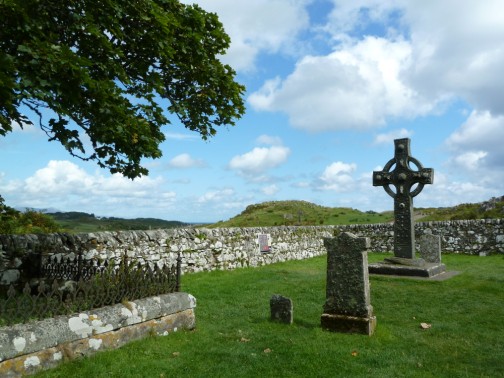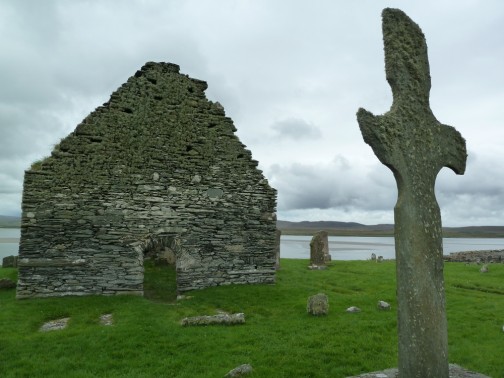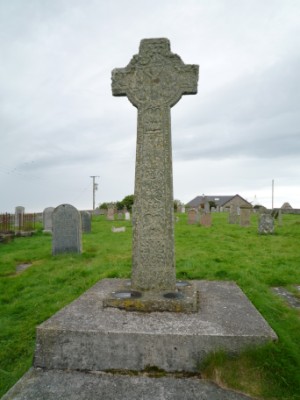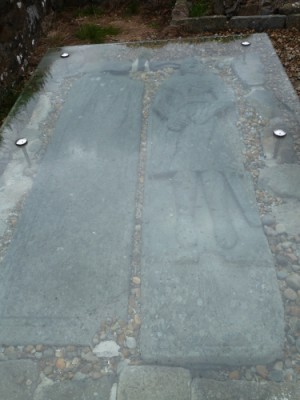Scotland Travel Blog August 10
"Things to do on Islay - other than whisky!"
Up to now, our range of Scotland Tours have not featured the island of Islay. This is not because we don't like the place, it is just that we simply haven't had the time to explore the island with the level of detail that we need to do in order to create our itineraries. We have been 3 times before, but visiting for pleasure is very different to the methodical way that we tour when researching for the guides.
My last tour of Islay was a bit too pleasure orientated as it was a weeklong rotation of whisky tastings and ceilidhs during the Islay Whisky Festival. This is a great event that happens each year on Islay during the last week of May. It's a very simple concept, there are 8 operational distilleries on Islay (if you count the new farmhouse operation at Kilchoman) and each day of the week one of the distilleries takes its turn at hosting an open day of distillery tours, whisky tastings, music and the occasional ceilidh. My merry friends got very skilful at hanging around the distillery tasting bar around 5pm when the barman was getting anxious to get home for dinner. This usually meant that we found half empty bottles of whisky thrust into our hands with suggestions that we might prefer to drink them somewhere else (that's the polite version...).
I digress, but the point of giving you this story is to explain that my previous tours of Islay were not as "structured" as the sort of tours that we do when researching places and routes for our itineraries.
On this tour of Islay, we had the objective of visiting B&Bs to compile an accommodation guide, but we also wanted to spend more time exploring the historical sites of the island since I had covered the distilleries quite comprehensively before (hic!). An interesting aspect of the B&Bs on Islay was the number that were run by locals born and bred on the island. There were also quite a few run by native Gaelic speakers and that isn't something that you often find these days, but Islay is that little bit further from the mainland and the island culture is less diluted than in other more accessible places.
Apart from the distilleries, which make some of the best whisky in my opinion, Islay has some lovely little chapels and most of these chapels feature Celtic Crosses and interesting gravestones. Kildalton is probably the most famous of the chapels as it is home to the Kildalton High Cross, a wonderfully intact celtic cross that dates back to 800 AD. This cross is arguably the finest of its kind and the detailed carving can still be appreciated despite 12 centuries of exposure to the elements.

Kilnave is a lesser known chapel as it is found about 3 miles along a narrow side road and it seems to take far more than 3 miles to get there. This chapel also features a Celtic cross from the 8th century, but this cross has been heavily weathered and it looks like it might snap if you lean against it. This chapel always makes me feel a bit of a shiver down my spine as it was here, in 1598, that the MacDonalds burnt to death 30 members of the MacLean Clan following a battle. As you step through the low doorway into the confined area of the chapel, you can sense the horror that the trapped MacLeans must have suffered in their last moments.

On a happier note, Kilchoman church has a Celtic cross with an interesting folklore attached to it. The cross was erected by the first "Lord of the Isles" to commemorate his dead wife. It then became a local tradition for pregnant mothers to place an offering at the foot of the cross whilst turning a wishing stone one way or the other to hope for a boy or a girl. The practice continues to this day and the wishing stone is now pear shaped after wearing a deep hollow into the plinth of the cross.

Islay, and more specifically, Finlaggan was the centre from which the "Lord of the Isles" ruled their west coast territories which extended from the Mull of Kintyre in the south through to the Isle of Skye in the north. Finlaggan now seems too humble and isolated to have ever been the centre of one of the most powerful dynasties in Scottish history. In Loch Finlaggan there is the small island of Eilean More where the Council of the "Lord of the Isles" would have met. Amongst the few ruined houses on this island, there is a chapel which contains some distinctive gravestones with effigies of Knights in full highland battle dress. These gravestones are found in several other places around the island, but the Finlaggan examples are among the best preserved.

Finlaggan also has an interesting connection to the legend of the "Stone of Destiny" upon which the Kings of Scotland were crowned. The “Stone of Destiny” was "officially" stolen by the army of England’s King Edward I, but it has been speculated that what he stole was not the real “Stone of Destiny” and that the Scots actually swapped the real stone for one that was used to block a drain. The reason for this speculation is the fact that the stone taken by the English does not fit the earlier descriptions of it which describe a “black, round, polished stone, shaped like a chair with inscriptions”. Also, the stone that they took has 2 metal rings attached to it, and these would have been ideal for attaching ropes to lift a drain cover stone.
Anyway... according to legend, the real "Stone of Destiny" was brought to Islay by Angus Og, head of Clan Donald, to be hidden at Finlaggan. We like this idea as it means all the Kings of England were crowned on a drain plug!
